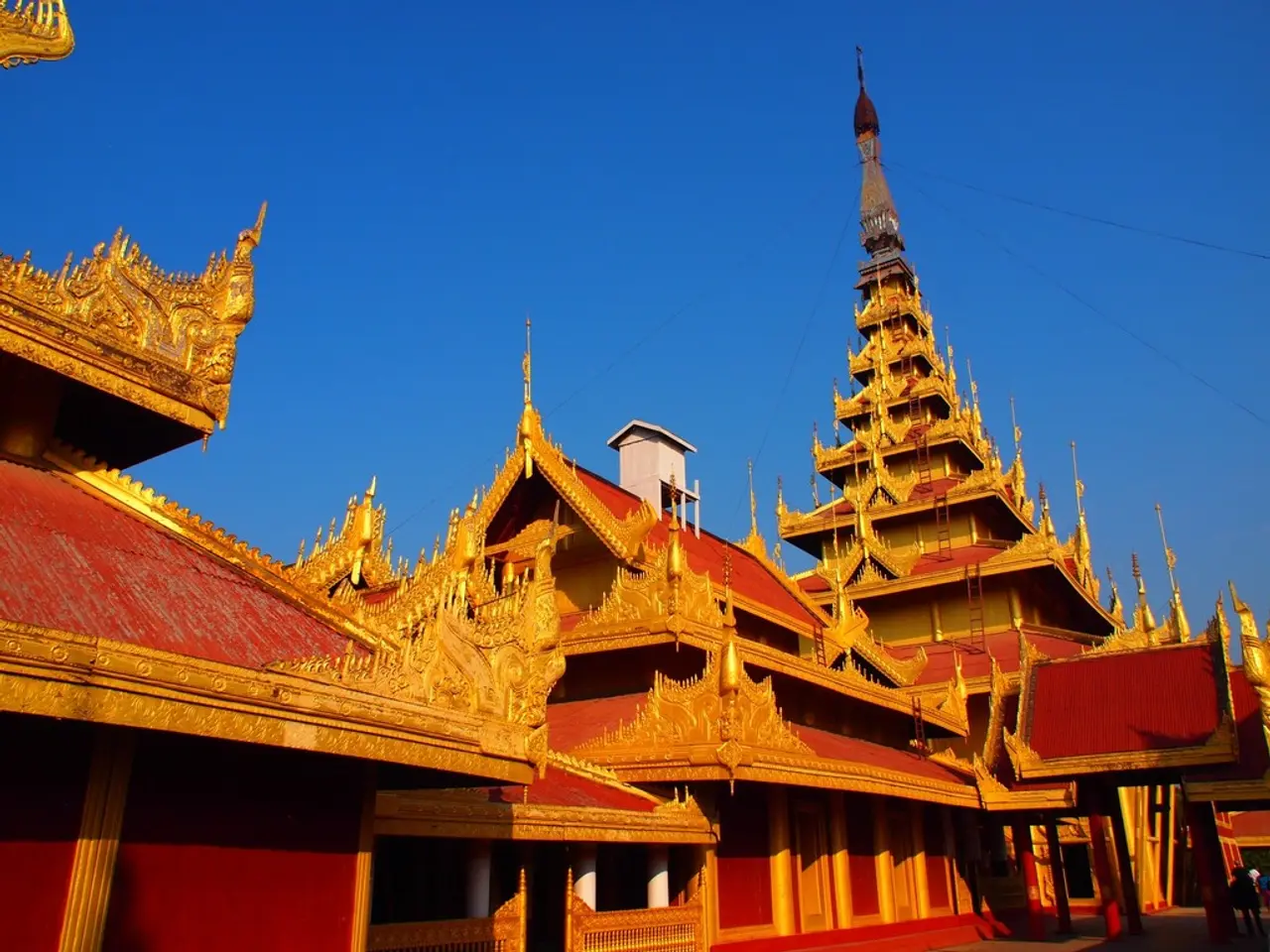Unveiling the Charm of India's Northeast: A One-Day Adventure in Imphal
In the heart of Imphal, Manipur, lies a historical gem that has stood the test of time - Kangla Fort. This ancient site, which served as the capital and seat of the Meitei rulers for nearly two millennia, is the cradle of the Manipur kingdom, dating back to the reign of King Pakhangba in 33 CE.
Kangla Fort embodies the political and cultural heart of Manipur, holding immense symbolic value for its people. Historically, it was the center of power for Manipur until 1891, reflecting the rich heritage of Manipuri rulers and their architectural style. The fort houses reconstructed temples dedicated to Meitei gods, especially Pakhangba, and is a symbol of Manipuri identity and continuity through centuries of political and social change.
The fort's historical significance is not limited to the Meitei era. During World War II, Kangla Fort witnessed significant events, including a water sprout in 1942 followed by Japanese bombing and battles during the Japanese invasion of Manipur. These events were considered ominous by locals, reflecting the fort's spiritual and cultural importance.
Imphal, the city surrounding Kangla Fort, is a blend of the ancient and the modern. It was founded in the first century AD and lies on a plain at an altitude of 785m. The broad avenues of Imphal give the ancient city a modern and open feel.
Among the city's many attractions, the Kangla Fort Complex stands out. Inside the compound, visitors can find several old temples, colonial era cottages, and a few restored structures. The most prominent attractions are the two large 'Kangla Sha', the mythical dragons guarding the land.
Manipur is renowned for its rich history and cultural heritage. It is the birthplace of polo (Sagol Kangjei in Meitei), and Mapal Kangjeibung in Imphal is arguably the world's oldest polo ground where the game is still played.
The Ima Keithel Market, the largest market of its kind in Asia, with more than four thousand women selling various products, is a riot of colors and has been there for over four hundred years. The drive to Imphal is breathtaking, with terraced fields of rice cultivation surrounded by mountains.
Manipur's history dates back to 1500 BC, and its local language is Meitei. The state is surrounded by hilly terrains, and one of the fascinating sights is the newly built "Hijagang" (Boat Yard), showcasing ancient Manipuri longboats decorated with dragon faces.
The Imphal War Cemetery contains the graves of soldiers from many countries who fought and died for the British during World War II. Nupi Lal Memorial, located opposite to the alternate gate of Kangla Fort, is a monument dedicated to the martyrs of Manipur who fought against the British in the Anglo-Manipur war in 1891.
In summary, Kangla Fort is not just a historical site; it is the ancient political and spiritual capital of Manipur, a symbol of Meitei culture, and a witness to significant historical episodes, including colonial and World War II events. A visit to Imphal and Kangla Fort offers a unique blend of history, culture, and natural beauty, making it a must-visit destination for any travel enthusiast.
Kangla Fort's historical significance extends beyond Manipur's history, representing a blend of war-and-conflicts, politics, and general-news, as it was a crucial site during World War II. The city of Imphal, with its ancient charm and modern urban feel, offers food-and-drink options that reflect the local lifestyle. Travelers can immerse themselves in Manipur's rich cultural heritage, exploring attractions such as the Ima Keithel Market, Mapal Kangjeibung, and the stunning terraced rice fields, all while learning about the state's deep-rooted history dating back to 1500 BC.




